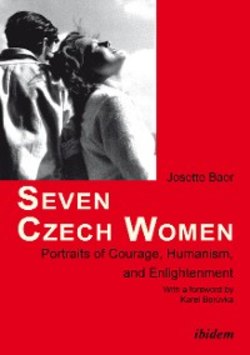Читать книгу Seven Czech Women - Josette Baer - Страница 11
X. 3 The method
ОглавлениеIn methodological terms this volume is eclectic. Chapters I, II, IV and V are in the form of essay; I describe the four women’s lives based on source material in Czech, using traditional historical analysis. A short introduction at the beginning of each of the essay chapters introduces the reader to the historical context.
In chapters III, VI and VII I use the method of the oral history interview (OHI). This method has a considerable advantage for the author and the reader alike – it is history rendered vibrant through the individual expression, description of events and memory of a person involved in the historical context subject to investigation.
The main research questions of this volume are: how did and do women deal with political, social and economic issues? How did the rights of Czech women change from the 19th to the 21st centuries and what are they concerned with today?
From the last decades of the 19th century to the first decade of the 21st, Czech women lived through seven political regimes:
1 The Austro-Hungarian empire (1867–1918);
2 Czechoslovakia (ČSR, the First Republic, 1918–1938);
3 The Protectorate of Bohemia and Moravia (1939–1945);
4 Post-war Czechoslovakia (ČSR, the Second Republic, 1945–1948);
5 Communist Czechoslovakia (ČSR, 1948–1989, after the federation of 1970 referred to as ČSSR);
6 The democratic Czechoslovak Federation (ČSFR, 1990–1992);
7 The Czech Republic (1993–) after the Velvet Divorce.[7]
Of these political regimes, the First Republic, post-war Czechoslovakia from 1945 to 1948 governed by the National Front, the Czechoslovak government established after the Velvet Revolution (Sametová revoluce) of 1989 and the Czech Republic after the Velvet Divorce (Sametový rozchod) of 1993 were legitimate in democratic terms.
Czech Prime Minister Václav Klaus (*1941) and Slovak Premier Vladimír Mečiar could not find common ground to set a course for economic privatization. In the summer of 1992, they agreed to divide the state, popularly referred to as the Velvet Divorce, in analogy to the Velvet Revolution that began on 17 November 1989.[8] In legal terms, the agreement to separate was a violation of the Czechoslovak Federal Constitution that required a plebiscite.[9]
On 1 January 1993, the Czech and Slovak Republics came into being, internationally recognized as sovereign states. The international community was occupied with the war in former Yugoslavia and the political situation in Russia; hence the peaceful, apparently democratic and negotiated separation was no burning issue. The Czech Republic achieved NATO membership in 1999 and became a member of the EU in 2004. The citizens of the small Central European state experienced the rule of the Habsburg dynasty, two world wars, the First Republic, German occupation, Communism and, eventually, the post-1989 harshness of the economic transformation from a planned central economy to a free market economy with the concomitant economic and social problems.
